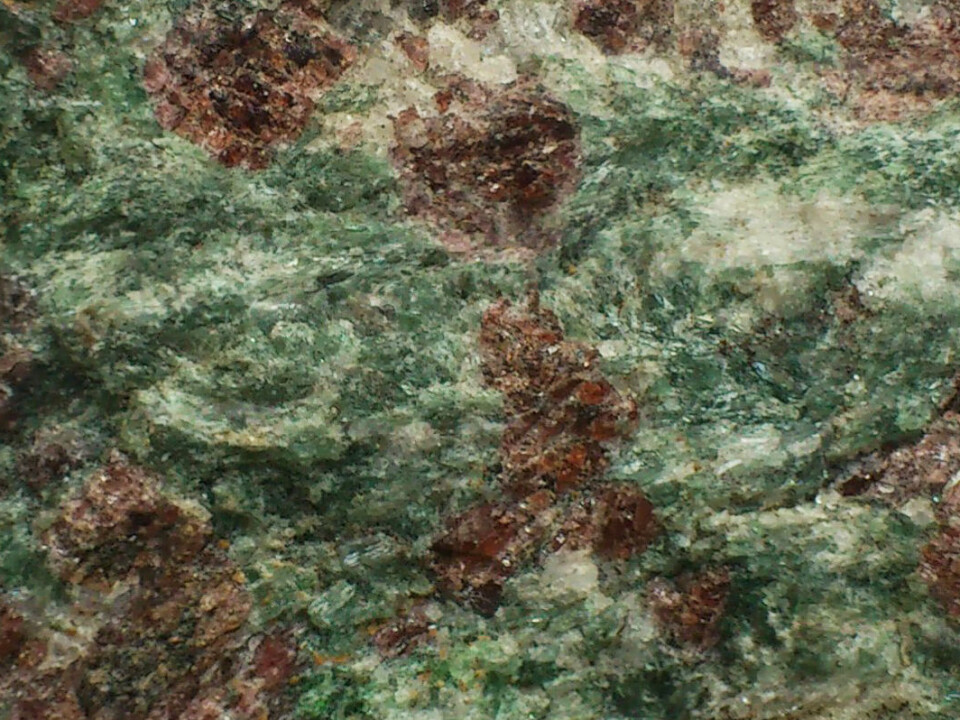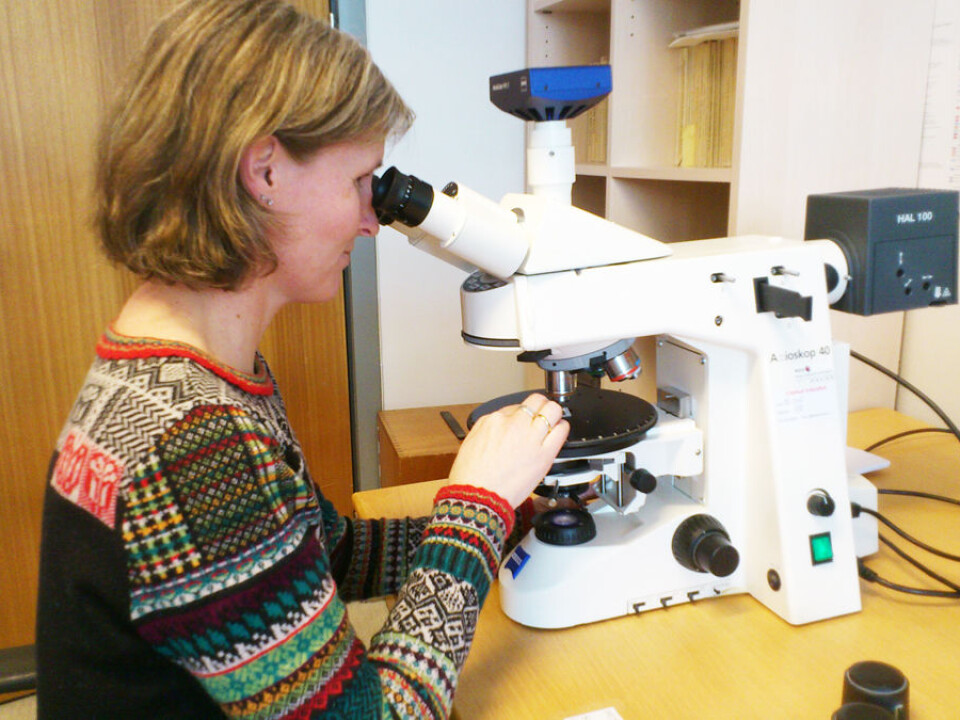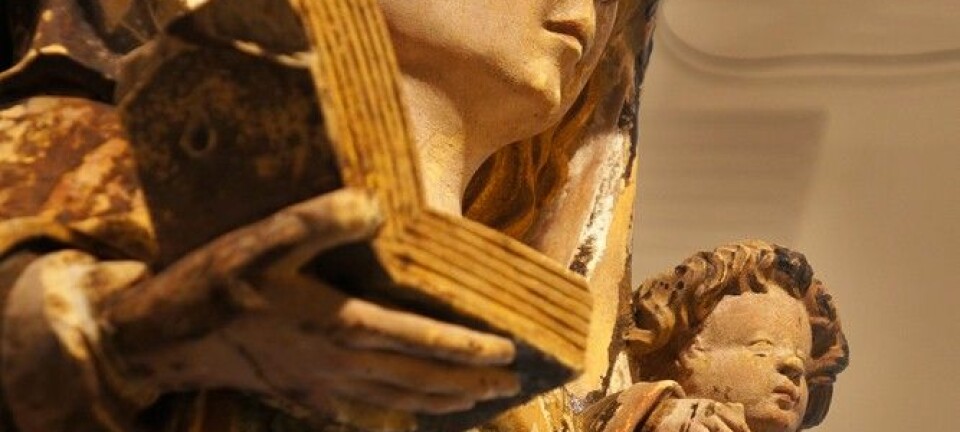
Enamoured with eclogite
This attractive rock was formed under extremely high pressure up to 100 kilometres down in the Earth’s crust, several hundred million years ago.
Denne artikkelen er over ti år gammel og kan inneholde utdatert informasjon.
Geologist and Researcher Ane Engvik at the Norwegian Geological Survey (NGU) in Trondheim fell in love with eclogite in her student days. She’s just one of the scientists in Norway who study it.
“Eclogite is neither especially valuable nor very rare, but we who work this rock think it’s the world’s most beautiful,” says Engvik.
The NGU geologist may have a crush on the green and red rock, but it doesn’t reciprocate by always being easy to work with – having formed in conditions close to the mantle it’s dense and hard to crush.
It has been put to a variety of uses ranging from dike construction in the Netherlands to adorning jewellery.
An older history

Engvik and eclogite found one another when she was selecting a subject for her dissertation.
She soon became so taken with the subject that it was the obvious theme for her doctorate.
The formation of the rock has a much older history. When the continental plates were colliding more than 400 million years ago some of the crust was pressed all the way to the border of the mantle.
This process was the start of the rock which developed at a depth of 45-100 kilometres, but can be found at the surface along the Norwegian coast today.
Red and green

Today eclogite is seen in many spots in Western Norway, from concentric arcs around Bergen and northwards to the Sognefjord, Kristiansund and the Trondheim Fjord.
The translucent red or pink patches in eclogite are garnets. The green areas are a type of pyroxene called omphacite. Sometimes the rock is less green. Then it contains more amphibole, a common dark mineral.
Eclogite is a metamorphic rock found in gneisses, in sizes from small fist-sized pockets just a few centimetres in diameter to large belts that several hundred metres.
“The rock was first described in Norway about 100 years ago, and since then scientists from all over the world have flocked to Norway’s West Coast to learn more about eclogite,” says Engvik.
Tells us about rock genesis
Geologists and rock hounds find eclogites easy to spot. Even the untrained eye cannot help noticing this rock, which had a rather extreme history.
Just think that it occurred up to 100 km below your feet a half billion years ago – numbers that are hard to fathom.
“Most other rock types have been formed considerably higher up in the crust, under much less pressure. Eclogites provide insight into how bedrock is formed. These are occurrences deep in the crust, which we can read in different structures of rock.”
“By studying eclogite and surrounding rock types we gain more understanding of what happens in the depths under the creation of mountain ranges,” says Engvik.
“If you are on a walk in Norway and come across some pieces of eclogite, it’s fine to take a little chunk with you. But some locations are protected and you should be aware of that,” says Engvik.
Translated by: Glenn Ostling
































